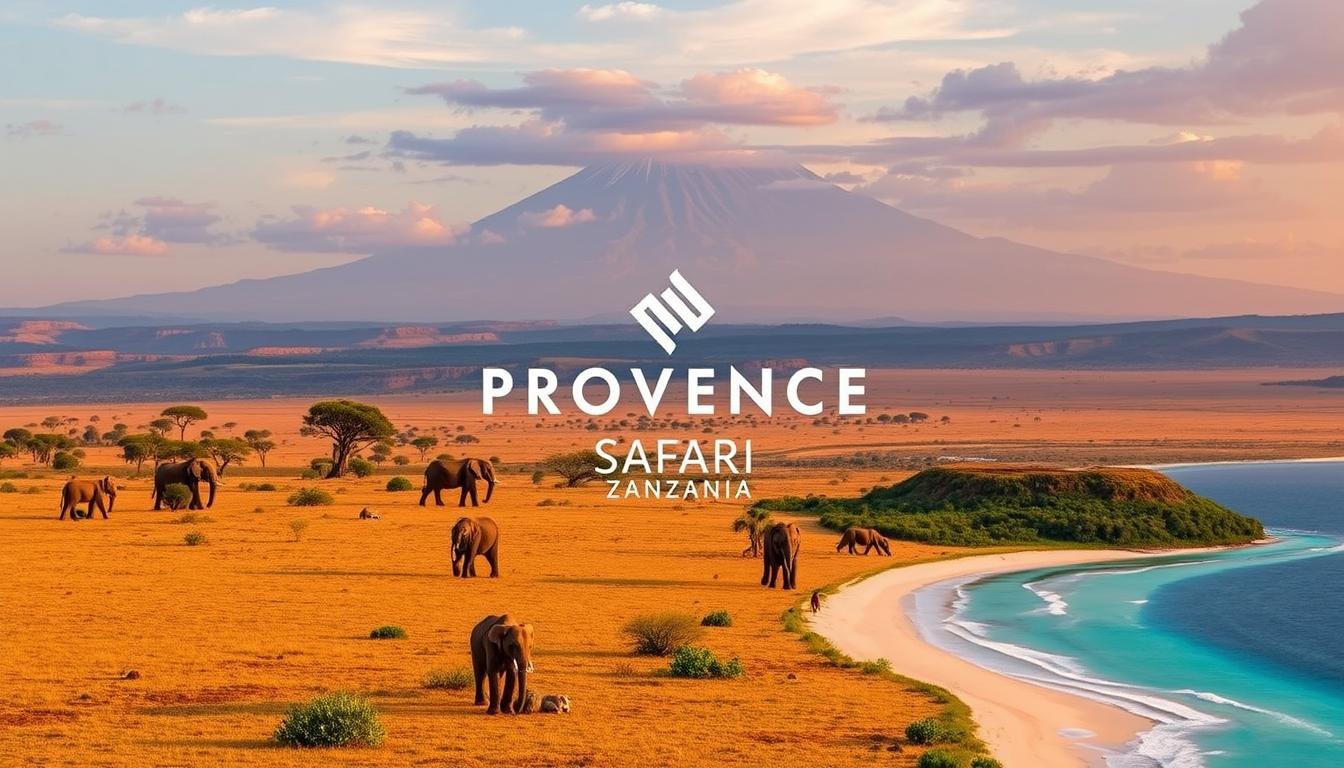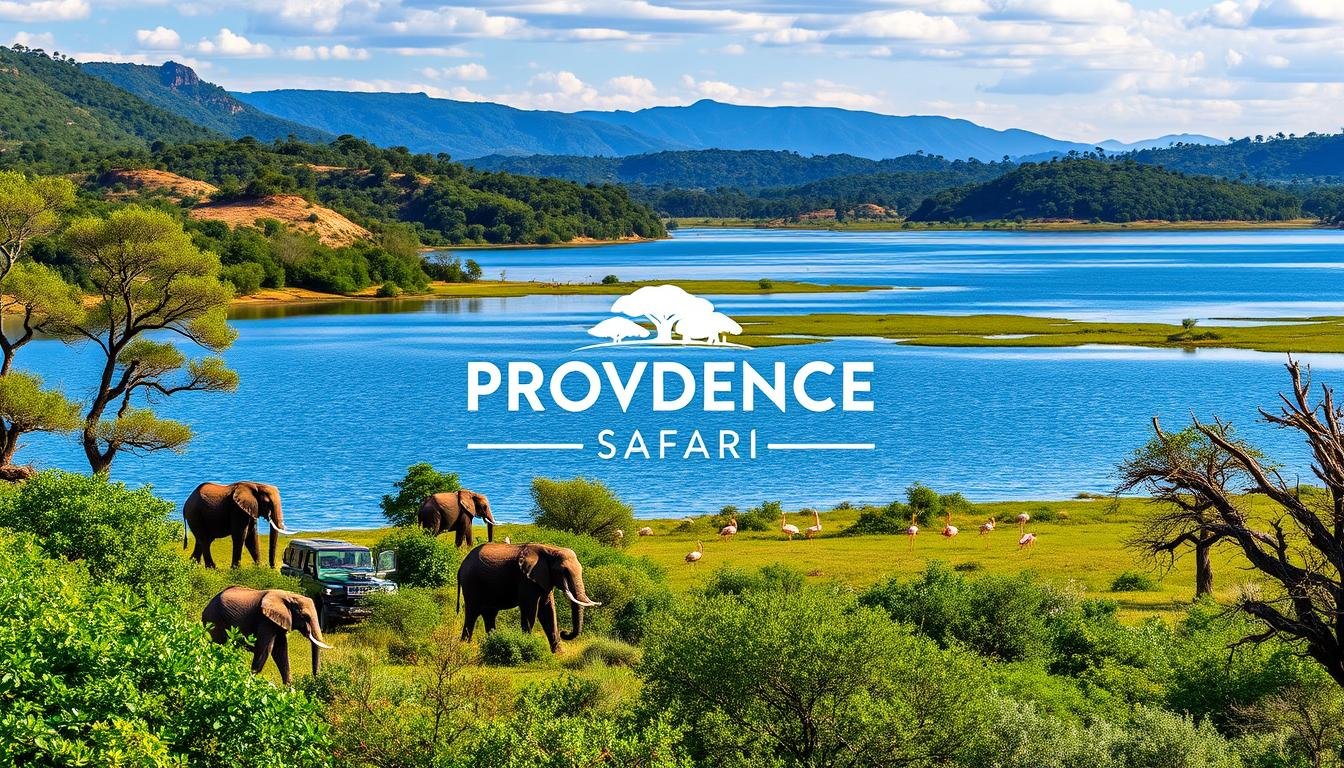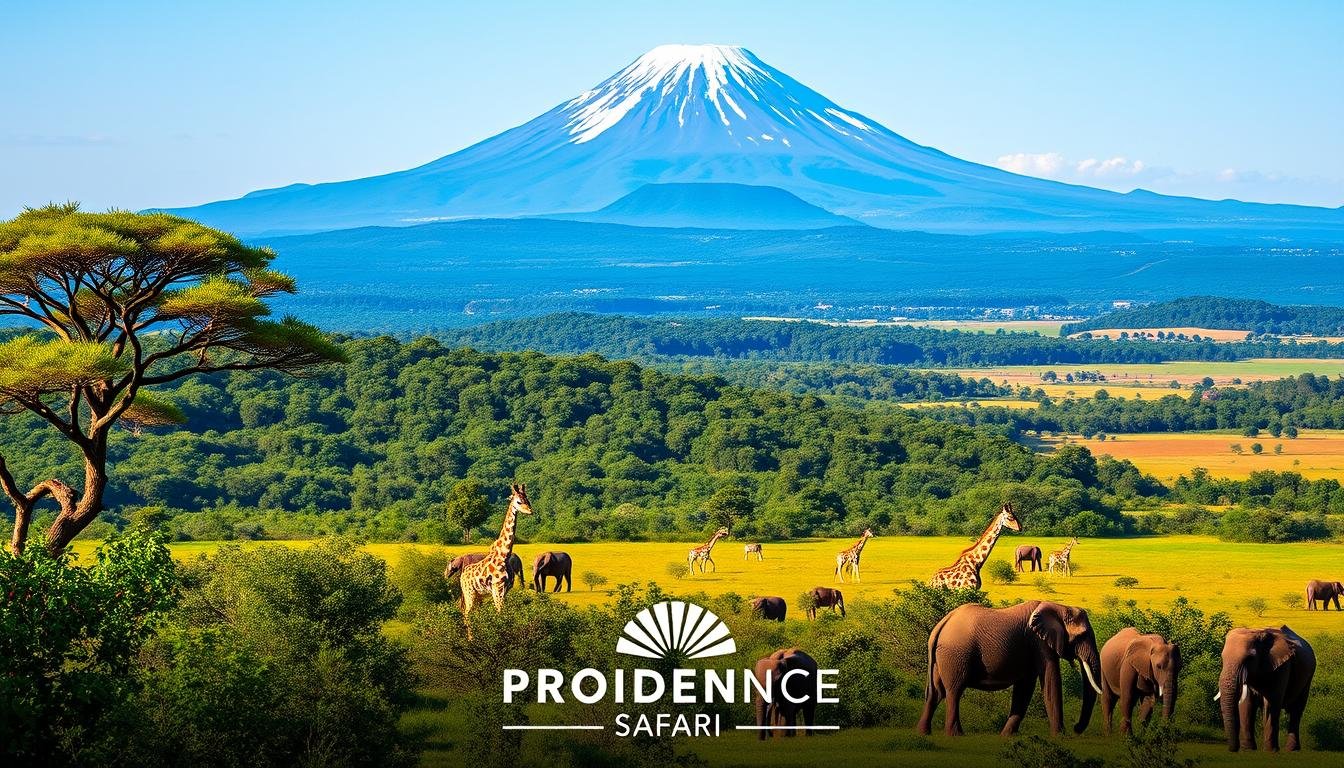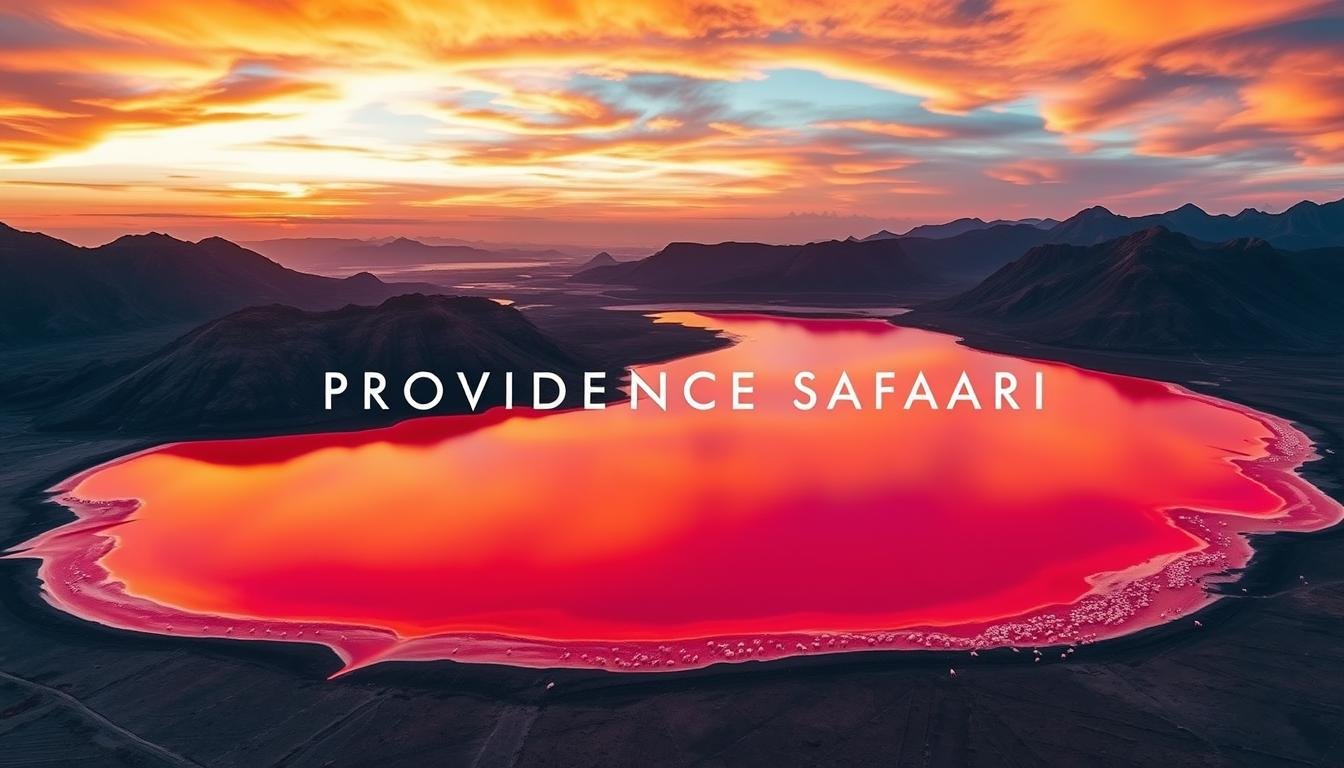Tanzania is home to a diverse range of natural and cultural attractions. From the famous Serengeti National Park to the Zanzibar Archipelago. We'll look at the best spots in Tanzania, like the Ngorongoro Crater.
The Ngorongoro Crater is a UNESCO World Heritage Site in Tanzania. It’s a huge crater, about 12 miles wide and 2,000 feet deep. It was made when a volcano collapsed, creating a stunning natural amphitheater.
The best time to climb Kilimanjaro is during the dry seasons. The Machame Route, Lemosho Route, and Rongai Route are the most popular.
Lake Manyara National Park is known for its diverse ecosystems and exciting activities. Zanzibar’s beaches are famous for their white sands and clear waters.
The best time for game viewing is the dry season, from June to October. The ruins of Kilwa Kisiwani are located on the Tanzanian coast. They show the rich Swahili culture and history of the area.
The ruins of Kilwa Kisiwani showcase Tanzania’s rich cultural legacy. They invite travelers to discover the stories of the Swahili people and their lasting impact. The Selous Game Reserve is a UNESCO World Heritage Site, covering 19,000 square miles.
Mahale Mountains National Park is home to many wild chimpanzees. Explore the forests, see the mountains, and enjoy Lake Tanganyika. Mikumi National Park has different landscapes and lots of animals.
The best time to see animals is from June to October. From November to May, the park is green and full of birds. Arusha National Park is small but packed with diverse wonders.
Momella Lakes is a calm way to see birds and other wildlife. Mbegani Beach has golden sands and the Indian Ocean’s waves.
Lake Natron is a natural wonder in Tanzania’s remote north. It’'s famous for its unique landscape and the vibrant flamingos that live there. Bagamoyo is a unique mix of history, culture, and beaches.
The Zanzibar International Film Festival celebrates local talent. The Mwaka Kogwa festival is a four-day celebration of the Shirazi New Year. The Sauti za Busara music festival showcases Swahili and East African music.

14 Nov
Tanzania is a place full of beauty and wonder. It has stunning natural sights and rich culture. From the famous Serengeti National Park to the towering Mount Kilimanjaro, it attracts visitors from everywhere. We’ll look at the best spots in Tanzania, like the Ngorongoro Crater and Zanzibar Archipelago. We’ll share what makes each place special.
Key Takeaways
- Tanzania is home to a diverse range of natural and cultural attractions, from the Serengeti National Park to the Zanzibar Archipelago.
- The Serengeti is known for its vast grasslands and the annual wildebeest migration, a stunning natural phenomenon.
- The Ngorongoro Crater is a unique geological feature that offers exceptional wildlife viewing opportunities.
- Mount Kilimanjaro, the highest mountain in Africa, is a popular destination for hikers and adventurers.
- Zanzibar’s Stone Town is a UNESCO World Heritage site, offering a glimpse into the island’s rich history and culture.
The Serengeti National Park
The Serengeti National Park is in Tanzania’s heart. It’s a natural wonder that draws visitors worldwide. This vast savannah is home to diverse wildlife, perfect for safari lovers.
Overview of the Serengeti
The Serengeti spans nearly 15,000 square kilometers. It’s a vast ecosystem full of life. The park’s changing landscape, from baobab trees to grasslands, is stunning. It’s a perfect setting for the animals that live here.
Wildlife Migration Phenomenon
The Serengeti is famous for the wildebeest migration. Millions of wildebeests move through the park each year. This natural event shows the park’s wildlife’s strength and adaptability.
Best Time to Visit
When to visit the Serengeti depends on what you want to see. The dry season, from June to October, is great for spotting animals. The wet season, from November to May, is the best time to see the wildebeest migration.
Tips for Safari Tours
- Choose a reputable safari tour operator with experienced guides and well-maintained vehicles
- Pack layers of clothing to prepare for changing weather conditions
- Bring a camera and binoculars to capture the stunning landscapes and up-close wildlife encounters
- Stay hydrated and pack snacks to keep your energy levels up during long game drives
- Be respectful of the wildlife and follow the park’s rules and regulations
The Serengeti National Park is a treasure in Tanzania. It offers a unique chance to see nature’s power. Whether you’re interested in the migration or the variety of species, this place will impress you.
Ngorongoro Crater
The Ngorongoro Crater is a UNESCO World Heritage Site in Tanzania. It’s an ancient volcanic caldera that draws visitors worldwide. This place is full of life, offering amazing wildlife viewing.
What Makes the Crater Unique
The Ngorongoro Crater is unlike any other place in Tanzania. It’s a huge crater, about 12 miles wide and 2,000 feet deep. It was made when a volcano collapsed, creating a stunning natural amphitheater. This environment is untouched, letting wildlife flourish.
Wildlife Viewing Opportunities
The Ngorongoro Crater is famous for its wildlife. It’s home to over 25,000 large animals, like African elephants and black rhinoceros. You can see wildebeest and zebra up close. The crater’s varied landscapes make it a unique safari spot.
Cultural Significance
The Ngorongoro Crater is sacred to the Maasai people. They’ve lived here for centuries, living in harmony with the wildlife. Visitors can see Maasai performances and learn about their traditions.
The Ngorongoro Crater is a must-see in Tanzania. It offers incredible wildlife, natural beauty, and cultural experiences. It’s perfect for anyone who loves nature, wildlife, or adventure.
Mount Kilimanjaro
Mount Kilimanjaro, the iconic snow-capped peak in Tanzania, calls to adventurous travelers. It invites them to climb to its summit. As Africa’s highest mountain, it offers a challenging yet rewarding climb. This journey showcases the diverse landscapes and natural wonders of the region.
Hiking Routes to the Summit
Climbers have several options for hiking routes to Mount Kilimanjaro’s top. The Machame Route, Lemosho Route, and Rongai Route are the most popular. Each route offers a unique view and level of difficulty. You can choose based on your preference and fitness level.
Essential Preparations
Scaling Mount Kilimanjaro needs careful planning and preparation. Climbers must have the right gear, like sturdy hiking boots and warm clothing. Physical fitness, proper acclimatization, and pacing are key for a safe climb. Getting advice from experienced guides can greatly enhance your adventure.
Best Seasons for Climbing
The best time to climb Kilimanjaro is during the dry seasons. This is from July to October and January to March. These months have clear skies, mild temperatures, and less rain. Climbing during these times makes the journey more enjoyable and increases your chances of reaching the summit.
> “The mountain is there to be conquered, not to be enjoyed.” – Edmund Hillary
Zanzibar Island
Zanzibar Island is a true gem in East Africa. It offers a mix of history, culture, and natural beauty. From Stone Town to the beaches and spice tours, it’s a must-see for travelers in Tanzania.
Exploring the Enchanting Stone Town
Step into Stone Town, a UNESCO World Heritage Site. This historic area is full of narrow alleys and ornate doorways. It feels like stepping back in time.
Explore the local markets and see the famous Zanzibar doors. You’ll feel the vibrant Swahili culture everywhere you go.
Zanzibar’s Stunning Beaches
Zanzibar’s beaches are famous for their white sands and clear waters. You can find everything from busy Kendwa and Nungwi beaches to quiet coves. They’re perfect for relaxing and enjoying the sea.
Spice Tours and Savory Cuisine
Zanzibar is known for its spice trading history. Take a spice tour to learn about cloves, cinnamon, and nutmeg. Then, try the local food, which is full of spice flavors.
Zanzibar has something for everyone. From Stone Town’s architecture to the beaches and spice tours, it’s unforgettable. Let Zanzibar’s culture and beauty capture your heart.
Lake Manyara National Park
In northern Tanzania, Lake Manyara National Park is a gem. It’s known for its diverse ecosystems and exciting activities. The park is small but stunning, with beautiful landscapes, lots of wildlife, and great birdwatching.
Diverse Ecosystems Abound
The park has many habitats, like the alkaline lake and lush forests. There are also acacia woodlands and dramatic escarpments. This variety supports a wide range of plants and animals, making it a natural wonder.
Birdwatching Delight
Birdwatching is a highlight here. Over 400 bird species call Lake Manyara home. You can see flamingos, African Fish Eagles, and lilac-breasted rollers. Bird lovers will be amazed by the park’s colorful birds.
Adventure Awaits
Lake Manyara National Park is full of adventure activities. You can go on game drives, walking safaris, canoeing, or mountain biking. There’s something for every adventurer.
ActivityDescription
Game Drives
Explore the park’s diverse landscapes and spot iconic wildlife, including the famous tree-climbing lions, on guided game drives.
Walking Safaris
Embark on guided walking safaris to immerse yourself in the park’s ecosystems and get up-close encounters with smaller wildlife.
Canoeing
Paddle along the tranquil waters of Lake Manyara and observe the park’s aquatic life and birdlife from a unique perspective.
Mountain Biking
Cycle through the park’s diverse terrain, from the lush forests to the dramatic escarpments, for an adrenaline-fueled adventure.
Whether you love nature, birdwatching, or adventure, Lake Manyara National Park is unforgettable. It will leave you in awe of Tanzania’s wonders.

Tarangire National Park
Tarangire National Park is in the heart of Tanzania. It’s a paradise for wildlife lovers. Known for its elephants and diverse wildlife, it’s a top spot for any safari.
Reasons to Visit Tarangire
Tarangire National Park offers a unique safari experience. It’s famous for its elephants, seen in large herds near the Tarangire River. You can also see lions, leopards, giraffes, and many bird species.
Elephants of Tarangire
The park is known for its elephants. It has one of the highest elephant populations in Tanzania. Seeing these giants at the river or in the vast landscapes is unforgettable.
Ideal Game Viewing Times
The best time for game viewing is the dry season, from June to October. Wildlife gathers near the Tarangire River, making it easy to see many animals. The dry season also offers better weather for safaris.
Tarangire National Park is a must-see for its elephants and diverse wildlife. It’s also a chance to see Tanzania’s stunning natural beauty. Plan your visit for an unforgettable safari adventure.
Ruins of Kilwa Kisiwani
The ruins of Kilwa Kisiwani are located on the Tanzanian coast. They show the rich Swahili culture and history of the area. This UNESCO World Heritage Site gives visitors a peek into the past. It reveals the architectural and cultural legacies of the Kilwa Sultanate.
Historical Importance of Kilwa Kisiwani
Kilwa Kisiwani, an island off Tanzania, was a key trading hub in the medieval era. It was a center of commerce and cultural exchange for the Swahili people. The ruins, including the Great Mosque and royal palaces, show the architectural and political power of the Kilwa Sultanate.
Exploring the UNESCO World Heritage Site
Visitors can explore the ruins of Kilwa Kisiwani. They can see the intricate coral stone carvings and the remains of grand structures. The site’s UNESCO World Heritage Site status highlights its global importance and the efforts to protect it.
Embracing Local Cultural Experiences
Visiting Kilwa Kisiwani is more than just learning history. It’s a chance to dive into the vibrant Swahili culture. Visitors can meet local artisans, try traditional food, and see dances passed down through generations. This offers a deeper understanding of the region’s cultural heritage.
The ruins of Kilwa Kisiwani showcase Tanzania’s rich cultural legacy. They invite travelers to discover the stories of the Swahili people and their lasting impact. By exploring this UNESCO World Heritage Site, visitors can appreciate the remarkable history and traditions that have shaped Tanzania.
Selous Game Reserve
The Selous Game Reserve is in Tanzania’s southern heart. It’s a UNESCO World Heritage Site, covering 19,000 square miles. It’s one of Africa’s largest protected areas, known for its diverse wildlife and ecosystems.
Differences from Other Parks
The Selous is different from the Serengeti and Ngorongoro Crater. It offers a unique safari experience. With vast landscapes and fewer visitors, it feels exclusive and adventurous.
Wildlife here roams freely, away from the crowds found in other places.
Safari Experience in Selous
The Selous is a paradise for naturalists. It offers many activities to explore Tanzania’s wilderness. You can go on boat safaris or guided walking tours.
See African wild dogs, elephants, and lions up close. The Selous promises an unforgettable safari experience.
Conservation Efforts
The Selous is known for its conservation work. It protects Tanzania’s wildlife and natural heritage. It’s home to many elephants, hippos, and crocodiles.
The reserve manages its resources sustainably. This ensures future generations can enjoy its beauty. By visiting, you help protect this natural treasure.
Whether you’re a seasoned safari-goer or new to it, the Selous is unforgettable. Explore Tanzania’s wildlife and have an adventure that will amaze you.
Mahale Mountains National Park
Mahale Mountains National Park is a hidden treasure by Lake Tanganyika in Tanzania. It’s famous for its wild chimpanzees. Visitors get to see these amazing animals in their natural home.
Encounter Chimpanzees in Their Element
Mahale Mountains National Park is home to many wild chimpanzees. Walking through the forests to see them is unforgettable. With patience and the help of guides, you can watch them play and interact.
Navigating the Trekking Trails
Chimpanzee trekking in Mahale is exciting but requires preparation. Here are some tips for a great trek:
- Wear sturdy, comfortable hiking boots and bring plenty of water and snacks
- Be prepared for a strenuous hike through varied terrain, including steep inclines and dense vegetation
- Listen closely to the guidance of your experienced local guides, who will help you navigate the trails and locate the chimpanzee families
- Maintain a respectful distance from the chimpanzees and avoid direct eye contact to avoid disturbing them
Immerse Yourself in the Scenic Splendor
Mahale Mountains National Park is not just about chimpanzees. It’s also a place of stunning beauty. Explore the forests, see the mountains, and enjoy Lake Tanganyika. Mahale offers adventure, relaxation, and a deep connection with nature.
Mikumi National Park
Mikumi National Park is in the heart of Tanzania. It’s a great place for wildlife watching that won’t cost a lot. The park has different landscapes and lots of animals, making it a beautiful place to see without spending a lot.
Wildlife and Landscape Overview
Mikumi National Park is full of wildlife. You can see African elephants, lions, and many other animals. The park has grasslands, woodlands, and rivers, making it perfect for watching animals in their natural home. There are buffalo, giraffe, and zebra on the plains. The rivers and lakes are full of birds.
Great Budget Safari Option
Mikumi National Park is known for being affordable. It’s cheaper than some other parks in Tanzania. It’s also close to Dar es Salaam, making it easy to get to and from.
When to Visit
- The best time to see animals is from June to October. During this time, animals gather near water, making them easier to spot.
- From November to May, the park is green and full of birds. It’s a good time to visit too.
- Early morning and late afternoon are the best times for game drives. The animals are more active then.
Mikumi National Park is great for anyone who loves wildlife. It’s affordable and has lots to see. It’s a must-visit for anyone going to Tanzania.
Arusha National Park
While the Serengeti and Ngorongoro Crater get a lot of attention, Arusha National Park is a hidden treasure. It’s small but packed with diverse wonders. You can see Mount Meru and enjoy canoeing on its clear lakes.
Highlights of the Park
Mount Meru, Tanzania’s second-tallest peak, is in Arusha National Park. Hikers can climb to the top for amazing views. The park also has giraffes, zebras, and rare black-and-white Colobus monkeys.
Lesser-Known Attractions
- Momella Lakes: These lakes are great for birdwatching, with many species visiting.
- Ngurudoto Crater: A smaller crater than Ngorongoro, it’s perfect for seeing wildlife up close.
- Canoe Safaris: Paddle on the Momella Lakes for a peaceful way to see wildlife and landscapes.
Activities to Explore
- Hiking: Besides climbing Mount Meru, there are many trails to explore in the park.
- Canoeing: Canoeing on the Momella Lakes is a calm way to see birds and other wildlife.
- Walking Safaris: Join a guided tour to get close to the park’s wildlife and natural wonders.
Arusha National Park may not be as famous as others, but it’s worth visiting. Its unique sights and activities offer a special way to see Tanzania’s beauty.

ActivityDurationDifficulty Level
Hiking to Mount Meru Summit
3-4 days
Challenging
Canoeing on Momella Lakes
2-3 hours
Easy
Walking Safari
2-3 hours
Moderate
> “Arusha National Park is a hidden gem that offers a unique and intimate perspective on Tanzania’s natural wonders. From the majestic Mount Meru to the serene canoeing adventures, it’s a must-visit destination for anyone seeking a truly immersive experience.”
Bagamoyo Coastal Town
Bagamoyo is a town on the Tanzanian coast. It mixes history with beach vibes. Here, you can dive into Tanzanian culture and heritage.
Historical Sites of Interest
Bagamoyo is full of historical sites. The Kaole Ruins, from the 13th century, show a Swahili settlement’s past. The Old Fort, built by Germans in the 19th century, highlights the town’s colonial role. The Boma, a former admin center, offers a peek into the town’s history.
Cultural Festivals
Bagamoyo’s cultural festivals are famous. The Bagamoyo Arts Festival celebrates Swahili traditions with music, dance, and art. The Mzalendo Cultural Festival in October remembers the slave trade, with powerful performances and exhibits.
Beach Relaxation Spots
Bagamoyo’s beaches offer a calm escape. Mbegani Beach has golden sands and the Indian Ocean’s waves. Kaole Beach is quieter, perfect for relaxation and reflection.
Bagamoyo is a unique mix of history, culture, and beaches. It’s a top spot for exploring Tanzania’s heritage and beauty. You’ll find memorable experiences in its historical sites, cultural festivals, and beaches.
Lake Natron
Lake Natron is a natural wonder in Tanzania’s remote north. It’s famous for its unique landscape and the vibrant flamingos that live there. Visitors get to experience something truly special.
The Unique Landscape
The lake’s red and orange colors stand out against the dry land. Its high alkalinity, up to 10.5 pH, is tough for most life to survive. But it’s perfect for the flamingos.
Flamingos and Other Wildlife
Lake Natron is key for lesser flamingos to breed. The alkaline waters are ideal for them. At peak season, 2.5 million flamingos gather here. The lake also hosts Nile crocodiles, small fish, and many bird species.
Photography Tips
Photographing Lake Natron needs skill and knowledge. The dry season brings out the lake’s colors best. Be ready for the heat and bright light. With patience and creativity, you can capture stunning images.

> “Lake Natron is a place of unparalleled natural beauty, a true testament to the power and diversity of our planet.”
Stone Town’s Cultural Heritage
Stone Town, by the Indian Ocean, is a mix of Swahili, Arab, Indian, and European cultures. It’s a UNESCO World Heritage Site. Visitors have been drawn to its rich history for centuries.
Architectural Wonders
The streets of Stone Town are narrow and winding. They are filled with unique Zanzibari architecture. This shows the island’s varied history.
Buildings have ornate wooden doors, fancy balconies, and detailed moldings. The House of Wonders, the Sultan’s Palace, and Forodhani Gardens are highlights.
Festivals and Events
- The Zanzibar International Film Festival celebrates local talent. It attracts film lovers worldwide.
- The Mwaka Kogwa festival is a four-day celebration of the Shirazi New Year. It features traditional dances, music, and the burning of a symbolic hut.
- The Sauti za Busara music festival showcases Swahili and East African music. It features local and international artists.
Culinary Experiences
Visiting Stone Town means trying the Swahili cuisine. The spice markets and Forodhani night food market offer a taste of the local culture. Enjoy curries, biryanis, and grilled seafood, along with refreshing juices and teas.
> “Stone Town is a living museum, a place where the past and present coexist in a unique and captivating way.”
Pemba Island’s Hidden Gems
Pemba Island is a hidden treasure away from Zanzibar’s crowds. It offers a real, untouched experience for travelers. This lesser-known spot has many hidden delights waiting to be found.
Off the Beaten Path
Pemba Island’s rugged landscapes and secluded coves offer adventure and exploration. You’ll find lush mangrove forests and pristine white-sand beaches. We’ll show you the island’s hidden wonders, so you can truly experience its beauty.
Diving and Snorkeling Spots
Pemba Island is famous for its amazing diving and snorkeling. You’ll discover a world full of marine life. From colorful coral reefs to tropical fish, it’s an unforgettable adventure for all.
